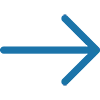Many individuals need a loan at other points, but securing the funding is difficult for individuals with bad credit scores. Lenders specialize in providing personal loans to individuals with bad credit up to $5,000 with guaranteed approval rates from direct personal loan lenders. Knowing the risks associated with high-risk loans and implementing effective debt management strategies is needed to prevent financial burden. Exploring various loan options and considering Flexible Repayment Terms offered by online lenders can improve your chances of finding a suitable personal installment loan.
What Are Types Of Personal Loans?
Personal loans are broadly categorized into two types: secured and unsecured loans. Secured personal loans require collateral, like a car or house, to secure the loan and offer lower interest rates than unsecured loans. Unsecured personal loans, on the other hand, do not require collateral but have higher interest rates.
Personal loans are classified based on their interest rate structure, with fixed-rate loans offering a consistent interest rate throughout the loan term and variable-rate loans featuring interest rates fluctuating over time. Debt consolidation loans and payday loans are types of personal loans that cater to specific borrowing needs.
Unsecured Personal Loan
Unsecured personal loans do not require collateral to secure the loan. They are granted based on the borrower’s creditworthiness, income, and other factors. The loan amount and repayment terms vary depending on the lender and the borrower. Online lenders often provide an array of unsecured loan options with Flexible Repayment Terms designed for those with bad credit scores.
Secured Personal Loan
Secured personal loans are loans that require collateral to secure the loan. Collateral is any valuable asset like a car, home equity, or savings account. The collateral serves as a guarantee to the lender that the borrower repays the loan. The lender has the right to seize the collateral to recover the loan amount if the borrower fails to pay the loan.
Secured personal loans have lower interest rates than unsecured ones because they are less risky for the lender. The loan amount and repayment terms are more flexible than unsecured loans because the collateral reduces the lender’s risk. With better approval rates, personal loan lenders offering secured loans make it easier to obtain a personal installment loan even if you have bad credit scores.
Fixed-rate Personal Loan
A fixed-rate personal loan is a type of loan that offers stability and predictability for borrowers. Its type of loan is ideal for individuals who want to budget and plan their finances accordingly. Interest rates on fixed-rate personal loans are higher than on variable-rate loans. The interest rate remains unchanged throughout the loan term with a fixed-rate personal loan. To determine your loan eligibility, lenders may review your credit score, employment history, and debt-to-income ratio, along with other factors. This information helps in providing tailored personal loan offers that suit your financial needs.
Borrowers count on making the same payment every month. The interest rate is guaranteed to remain the same for the duration of the loan, which is beneficial for borrowers who want to avoid unexpected rate hikes that result in higher monthly payments.
Variable-rate Personal Loan
A variable-rate personal loan is a loan in which the interest rate fluctuates over the loan term. The interest rate on a variable-rate loan is tied to a benchmark rate, like the prime rate or the LIBOR rate, and changes monthly.
The advantage of a variable-rate personal loan is that the interest rate is lower than a fixed-rate loan when they first get the loan. It results in lower monthly payments and potentially saves money over the loan term. While searching for personal loan offers, it’s essential to consider your loan eligibility for variable-rate loans, especially if you’re expecting changes in your financial situation or if you can manage the uncertainty of fluctuating interest rates.
Debt Consolidation Loans
Debt consolidation loans are a type of personal loan that help individuals manage their debt by combining multiple high-interest debts into a single, lower-interest loan. It simplifies the repayment process and saves money on interest over time. Debt consolidation loans are useful to consolidate credit card balances, medical bills, personal loans, and other types of unsecured debt. Make sure to check your loan eligibility before applying for a debt consolidation loan, as lenders often have specific criteria for approval.
Payday Loans
A payday loan is a type of short-term loan that is due on the borrower’s next payday. The loans are designed to provide quick cash to people who need it but are unable to qualify for traditional loans due to poor credit or other factors. Payday loans are for small amounts, ranging from a few hundred dollars to a few thousand dollars, and have high-interest rates and fees. These loans may not require the same loan eligibility criteria as other personal loans, but it’s crucial to weigh the risks and benefits before choosing this option.
What Are The Eligibility Criteria to Get A $5000 Personal Loan?
To secure a $5000 personal loan, you will need to meet certain loan eligibility criteria set by the lender. These may include a minimum credit score, a stable income source, and a low debt-to-income ratio. Each lender may have different requirements, so it’s essential to research and compare personal loan offers to find the best option for your financial situation.
The eligibility criteria for a $5000 personal loan vary depending on the lender, but there are other common requirements that most lenders look for. Borrowers must meet the following criteria to qualify for a $5000 Personal Loan.
- Have a steady income. Provide proof of income, like pay stubs or tax returns, to show that one has a steady source of income and is capable of repaying the loan.
- Have a good credit score. A good credit score increases the chance of being approved for a $5000 personal loan and results in more favorable terms. Other lenders specialize in providing loans to individuals with bad credit history.
- Meet the age requirement. Be at least 18 years old to be eligible for a personal loan.
- Be a U.S. citizen or permanent resident. Most lenders require borrowers to be U.S. citizens or permanent residents.
- Have a bank account to receive the loan funds and make repayments. This is essential for the financial institution handling your loan request.
Pros And Cons Of Applying $5000 To Direct Lenders
One potential advantage of applying to a direct lender is the convenience of obtaining cash quickly. Personal loans have a simple online application form and are approved in minutes. The loan process with direct lenders is often more straightforward compared to traditional lenders, resulting in competitive interest rates and more favorable repayment terms. This can decrease the risk of falling into a cycle of debt.
Pros
Listed below are the pros of applying $5000 to direct lenders.
- Quick access to funds – is one benefit of using direct payday lenders. Lenders provide quick funding within a few hours of approval, which are useful for urgent financial needs. They are beneficial when one needs to pay for unexpected expenses or bills, like a car repair or medical bill, that require immediate attention.
- No credit check required – Direct payday lenders do not perform a credit check when approving a loan application. Borrowers with poor credit history or no credit history are eligible for a loan. This makes it a suitable option for loans for people with bad credit borrowers.
- Online application process – Direct payday lenders offer an online application process that is quick and easy to complete. They are convenient for borrowers who need more time to visit a physical lender’s office and cater to those needing bad credit instant approval.
- Flexibility – Direct payday lenders offer borrowers the flexibility to choose a loan amount and repayment term that suits their needs. They are useful for borrowers requiring a small loan amount and not wanting to commit to a long-term repayment schedule. This financial option is especially attractive to those with same-day funding needs. Many direct payday lenders offer an online application process that is quick and easy to complete.
Cons
Listed below are the cons of applying $5000 to direct lenders.
- High-interest rates – Direct lenders charge high-interest rates on their loans, making the cost of borrowing very expensive. Sometimes, they do it as a financial solution to cover their risks associated with borrowers having a poor credit score.
- Short repayment terms – Direct lenders often require borrowers to repay their loans within a short period, usually within two weeks. These short repayment periods are difficult for borrowers to manage, particularly if they need further financial help.
- Risk of debt cycle – Some consumers struggle to repay loans due to high-interest rates and short payback durations. In these cases, they might have to renew or roll over the loan, which adds costs and interest. It creates a cycle of debt where the borrower borrows from reliable lenders to make ends meet, and the debt grows.
- Predatory lending practices – Other direct lenders engage in predatory lending practices, like charging excessive fees or imposing unreasonable repayment terms. Borrowers must choose a reputable lender and carefully read the terms and conditions of their loan contract before accepting it.
Procedure for Obtaining Bad Credit Personal Loan
The procedure for obtaining bad credit personal loans involves finding a licensed lender, completing an application form and providing personal and financial information, going through the loan application process, receiving a loan approval decision, signing a loan agreement, and receiving the funds in the bank account.
- Search for a licensed lender. Choose a reputable lender with reasonable terms and fees, preferably one with minimum credit score requirement and specialized lenders that understand your specific financial needs.
- Apply for the loan. Fill out the loan application form, which requires personal and financial information like name, address, employment status, and bank account details. Most lenders provide an online form for your convenience.
- Provide documents. Other lenders require applicants to provide proof of income or employment, like a pay stub or bank statement. These documents help in ensuring quick approval times and Access to Cash.
- Receive loan decision. The lender reviews the application and notifies applicants of the loan decision, usually within minutes or hours, offering quick approval times.
- Sign agreement. Borrowers need to sign a loan agreement that outlines the terms and conditions of the loan, including the loan amount, fees, and repayment schedule if approved. This agreement should detail the options for borrowers.
- Receive funds. The lender deposits the funds directly into their bank account, usually within one business day after accepting the loan agreement, thus granting Access to Cash.
Choosing The Best Loan Solution
Choosing the best loan solution depends on individual circumstances and needs. Start by determining the amount of money needed and the purpose of the loan. Check credit score, income, and expenses to determine eligibility for different loan types, considering the minimum credit score requirement. Research different lenders, including specialized lenders and compare interest rates, fees, repayment terms, and customer reviews to find the best loan solution for the specific situation. Read and understand the loan agreement, ensuring it provides options for borrowers, before signing.
- Only borrow what is needed. Borrowing more than a personal need is enticing, but one must repay the whole amount with interest and fees. Making a financial decision with the help of financial advice can help you determine the right amount to borrow. Opt for Flexible loan amounts to better suit your needs.
- Know the terms and fees. Understand the terms and fees associated with the loan before accepting a payday loan. It includes the interest rate, fees, and repayment terms. A streamlined process offered by some financial services ensures that borrowers are well-informed about their loan terms, increasing their chances of approval.
- Have the plan to repay the loan on time. Involve cutting back on other expenses or finding other sources of income. Timely repayment is a crucial aspect of any loan, making it a more convenient option for both the borrower and the lender.
- Don’t borrow to pay off other debts – Borrowers must never consolidate many obligations into a single loan. A vicious debt cycle results from its action. Instead, seek financial advice from professionals who can guide you on how to better manage multiple debts.
- Compare lenders. Shop around and compare lenders to find the best interest rates and fees. Look for lenders who are transparent about their terms and fees and who are working with individuals if they are unable to repay the loan on time. Choosing the right lender plays a significant role in making your loan experience a positive one, so always consider the value added by each lender’s financial services.
How to Evaluate Finances And Create A Budget?
Individuals gain control of their finances and work towards achieving their goals by reviewing income, analyzing spending habits, setting financial goals, and creating a budget. Creating a budget seems overwhelming, but it’s a step toward achieving financial stability. Here are steps to help evaluate finances and create a budget, keeping in mind the need for sound financial decision making and seeking financial advice when needed.
- Review Income. Start by reviewing all sources of income. It includes salaries, wages, bonuses, and other income sources such as Extra Cash from side gigs.
- List Expenses. Make a list of all expenses, including fixed expenses like rent, mortgage, and car payments and variable expenses like groceries, entertainment, and utilities. Don’t forget to include monthly expenses such as insurance and subscriptions.
- Analyze Spending. Look for areas where one is able to reduce expenses without sacrificing the quality of life. Keep an eye on medical expenses and living expenses to find cost-saving opportunities.
- Set Financial Goals. Set financial goals like paying off debt, saving for emergencies, or planning for retirement. It helps prioritize spending and makes it easier to allocate funds accordingly. Consider a bad credit access personal loan to help you achieve these goals, if needed.
- Create a Budget. Using the information gathered, create a budget that outlines income, expenses, and savings goals. Be realistic and include a buffer for unexpected expenses. Aim to make payments on time to avoid late fees and penalties.
- Monitor Progress. Keep track of spending and compare it to the budget. Ensure you’re staying within your means and making payments on time.
- Adjust as Needed. Adjust the budget as needed to accommodate income, expenses, or financial goals changes. Remember that a bad credit access personal loan is an excellent option for individuals who need some financial assistance.
Bottom Line
Bad credit personal loans provide a lifeline for individuals with poor credit who need financial assistance. Choose reputable lenders with competitive rates and terms to avoid falling into a cycle of debt. Understanding the types of personal loans available, like secured and unsecured loans, fixed and variable-rate loans, debt consolidation loans, and payday loans, helps individuals make informed decisions.
Meeting the eligibility criteria, like having a steady income, a good credit score, and a bank account, increases the chances of being approved for a $5000 personal loan. Bad credit personal loans help individuals improve their financial situation and achieve their goals with careful planning and responsible repayment.
Frequently Asked Questions
Can I really get a $5000 personal loan with guaranteed approval from direct lenders, even with bad credit?
No lender can truly guarantee approval, but there are legitimate options for bad credit borrowers needing $5000. Expect higher interest rates and fees compared to good credit applicants when using subprime direct lenders.
What should I watch out for when considering personal loans with guaranteed approval for bad credit from direct lenders?
Be wary of lenders promising guaranteed approvals without checking your credit or income. Avoid lenders charging large upfront fees before approving the loan or securing your personal information.
Are there legitimate direct lenders that specialize in bad credit personal loans, and how can I find them?
Many online lenders now cater to bad credit borrowers but still assess repayment ability. CompareCompanies.com and LendingTree offer tools for finding and comparing offers from legitimate direct subprime lenders.
What are the typical interest rates and repayment terms associated with bad credit personal loans from direct lenders?
Interest rates typically range from 15-35% APR with repayment terms of 6 months to 5 years. Lower rates go to borrowers at the higher end of the bad credit spectrum.
Are there alternatives to consider if I’m having difficulty securing a $5000 personal loan with bad credit and want to avoid potential scams?
Safer borrowing options include smaller installment loans, credit union loans, 401k/retirement plan loans, debt management plans, family loans, credit counseling, or negotiating with creditors.


